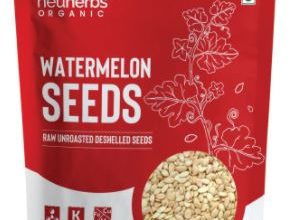Lifespan Evolution in Humans and Macaques

This article will discuss the mechanisms behind lifespan evolution in humans and macaques, the intrinsic factors that inhibit evolution, and how energy sensing pathways are adapted for a longer lifespan. We will also discuss the effects of faster reproduction on lifespan. Hopefully, this article will be helpful for those considering studying longevity and reproduction. It can be downloaded for free from a variety of websites. Here are some more resources on lifespan evolution. Then you can decide if this research is for you.
Humans and macaques have undergone a relatively rapid process of lifespan evolution
A new study published in Science has found that the genomes of seventeen primate species, including human beings, have undergone a relatively rapid process of life span evolution. The three species share 96% of their DNA sequences, and their most recent common ancestor was roughly six million years ago. Although human lifespans vary widely, the study does find that humans and macaques have undergone a similar process of lifespan evolution.
In addition, the brain size of humans and macaques has increased considerably, allowing for extended periods of language and social learning. This accelerated lifespan evolution was responsible for the human species’ recent breakthrough in medicine. However, the rapid evolution of life span may not be the only evolutionary cause of the two species’ differences. Further, the two species’ lifespans are also very similar – both humans and macaques live a relatively long life span compared to other animals. Nowadays, there are people are also curious to know about lifespan of idiots as well
Extrinsic factors that inhibit lifespan evolution
The theory of maladaptive aging suggests that lifespan is limited by harsh extrinsic forces such as mortality. This theory suggests that increasing lifespan may not benefit the kin in certain circumstances. However, it may be beneficial if extrinsic mortality is low. Age-related reduction in reproduction and fecundity could lead to the evolution of longer lifespans. It is also possible to increase lifespan by enhancing reproductive rates.
In addition to enhancing the expression of TSP, overexpression of Gnmt in mice and worms extends the lifespan of these organisms. The overexpression of this gene may increase anti-oxidative capacity, promote SAM catabolism, and increase the synthesis of taurine and cysteine. The gut-specific overexpression of lysosomal mannosidase increases autophagy and enhances the maintenance of homeostasis.
Adaptation of energy sensing pathways to increase lifespan
Adaptation of energy sensing pathways may increase lifespan by promoting longevity in the cancer-resistant lineage. In the past, researchers have found a tradeoff between cancer-prevention and aging, and there are likely to be overlapping evolutionary constraints. The p53 pathway, for example, may be an example of a genetic variant where selection could act on non-cancer-related loci in linkage disequilibrium. However, it is possible that these evolutionary constraints act against aging-related pathologies as well.
The basic criteria for longevity are enhanced immune functions, efficient DNA responses, tight control over the cell cycle, and genome maintenance, all of which are under the control of adaptive regulation. Some of these features may contribute to longevity by species-specific adaptations to their ecological niche and environments, such as climate extremes. However, the mechanisms underlying these physiological and genetic changes are largely unknown. Adaptation may also be a result of adaptation to other aspects of life, including the evolution of energy sensing pathways.
Effects of faster reproduction on lifespan
In secondary aging theories, a trade-off between longevity and rapid reproduction limits selection for longevity. For example, faster reproduction leads to lower body fitness after reproduction, and a shorter lifespan can be advantageous in a number of situations. Fast reproduction also leads to less regeneration and side effects on homeostasis. Hence, a lifespan trade-off between faster reproduction and slower reproduction limits the evolution of a longer lifespan.
It is difficult to determine whether the combined effect of slower reproductive age and shorter post-fertile lifespan is beneficial to fitness or the environment. Nonetheless, the results are likely to vary across populations and species. In some animals, fast reproduction leads to a prolonged post-fertile life span. For example, toothed whales stop reproducing earlier than expected based on their lifespan. This result may be a function of opposing selection. Moreover, you may also know stay connected to the facts related blogs to explore such topics.
For more articles keep visiting: Articles Work


